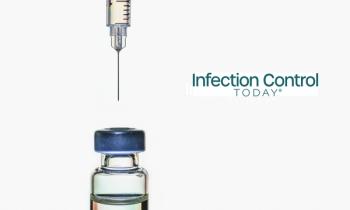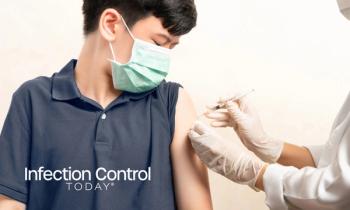
- Infection Control Today, December 2020 (Vol. 24 No. 10)
- Volume 24
- Issue 10
The Year Infection Preventionists Showed the World Their Worth
The ability to answer questions and explain why just yesterday we were doing something differently than today occurred fairly frequently because of the evolving nature of the pandemic.
The first case of coronavirus disease 2019 (COVID-19) in the United States was reported on January 21, 2020.1 A lot has changed since then. People outside of healthcare have become all too familiar with terms usually reserved for epidemiologists and public health professionals such as pandemic, social distancing, hand hygiene, masking, family pods, antibody tests, and quarantine. Healthcare personnel have also learned a thing or two about all of these terms and much more. Infection prevention and control (IPC) teams have been thrust to the forefront to guide staff through these challenging times, sharing their knowledge of personal protective equipment(PPE), disinfection of medical equipment and patient care spaces, and communicating the ever-evolving changes as more information is gained about SARS- CoV-2, just to name a few.Articles about “lessons learned” and what healthcare providers and hospital systems can expect in the coming months are plentiful, but no one really knows what lies ahead. Healthcare and the world have been turned on its head. Outside of healthcare, everyday items like toilet paper and paper towels became scarce. In healthcare, things that we took for granted, such as performing our daily tasks of providing patient care and keeping an eye on PPE, disinfectants and cleaners, hospital bed availability, critical medications and equipment, and especially staff, became problematic as supplies proved to be in short supply and infection preventionists (IPs) had to hit the ground running. COVID-19 demonstrated huge gaps in preparedness worldwide. So, the key “takeaway” is the need for preparation for the upcoming months and into the future. The COVID-19 pandemic is here to stay so we had better learn from it to prepare for the next one because there will be another.
Communication Counts
During the beginning of the pandemic, the importance of ongoing communication was highlighted. IPC staff learned they needed to find ways to stay on top of all of the information that was being disseminated by the various media sources. Although social media platforms like
Facebook and Twitter seem to be the “go- to” source for information these days, IPs had to keep up-to-date on information provided by reliable sources such as the World Health Organization (WHO), the US Centers for Disease Control and Prevention (CDC), and the Association for Professionals in Infection Control and Epidemiology (APIC), and redirect healthcare personnel to these “sources of truth.” Communication via in-person in-services and huddles, real-time education, and handouts became absolutely vital for providing accurate information and guiding practice. The ability to answer questions and explain why just yesterday we were doing something differently than today occurred fairly frequently because of the evolving nature of the pandemic. Communication had to be winnowed down to succinct bullet points with the disclaimer that we still don’t know very much, and things could change. And change they did!Another key lesson IPC staff learned was how important it was to keep a rolling supply of PPE on hand.2 Most hospitals maintain adequate supplies of PPE on patient care units and in supply rooms, but none anticipated the amount of PPE that would be needed for the volume of patients ill from the virus. PPE shortages caused serious problems for some hospitals necessitating the need to reuse, or reprocess for reuse, PPE, especially N95 masks. This was uncharted territory for IPC professionals and healthcare workers. Healthcare workers faced possible risks from reusing PPE previously designated as one time or single-patient use. Donning and doffing used PPE posed risks of self-contamination and possible PPE failure. IPC staff had to step in and train staff on how to safely reuse PPE.
Difficult Tasks
Looking back, IPCs learned they needed to audit not only when PPE should be used but also how staff don and doff. They also learned that retraining staff to reuse PPE, no matter how well they messaged it, was a difficult task at best because of staff safety concerns. To counteract the justifiable staff safety issues, some hospital systems are stockpiling PPE. In order to not waste the stockpiled supplies by letting them expire, more frequent drills are planned to keep the supplies fresh. To help prevent shortages of PPE from happening in the future, hospitals in some states, California for example, have recently passed a law that requires hospitals, nursing homes, large medical groups and dialysis clinics to have a 45-day supply of pandemic-level PPE on hand. IPCs learned you can never have enough PPE on hand and staff work better when they know they are being kept safe.IPCs learned how to think outside the box to help create safe, flexible spaces to accommodate large volumes of patients, both COVID-19 positive and non-COVID-19 patients. They learned about the importance of ventilation and barriers. Fatigue and the emotional toll on the frontline staff was something no one saw coming. IPCs and healthcare staff learned to lean on each other for emotional support. They learned the importance of flexibility in planning and thinking, re-evaluating how processes and practices can be safely continued with many different variables. As states begin to re-open their economies and healthcare facilities continue to be financially and physically exhausted, fears of a second wave of the coronavirus are a growing concern. According to the director of the CDC, Robert Redfield, MD, “a second wave of the novel coronavirus will be far more dire because it is likely to coincide with the start of flu season. Hav- ing 2 simultaneous respiratory outbreaks will put significant strains on healthcare systems.”3 These factors heighten the importance of remaining prepared for what lies ahead. The pandemic mitigation tactics for the public of frequently washing hands, wearing face masks, and physically distancing and avoiding gatherings, especially indoors, remain important measures to enforce. Increasing and sustained public buy-in on these measures, as well as ramping up flu vaccination, would help prevent further strain on health systems and staff in the months ahead.
Take Stock, Stock Up
Health systems and healthcare workers should have evaluated what worked and what didn’t during the pandemic onset. They should be stocking up on equipment like ventilators, medications, and personal protective supplies, including gowns, eye protection, and masks. Cleaners, disinfectants, and hand sanitizers should have been purchased in sufficient quantities, if available. Alternative products should be investigated and validated. IPCs should be rounding, auditing, and training on all aspects of PPE, cleaners and disinfectants, especially if new products have been introduced. Examination of patient surge capabilities and patient throughput should be performed, refined and tested, running drills for worst-case scenarios. Processes and protocols should be in place to support staff mentally and emotionally. COVID-19 has already taken over 1 million lives worldwide, more than 200,000 of them American lives, as of October 8, 2020. COVID-19 is here to stay. Some believe the future course of the pandemic will play out as different scenarios such as low-grade continuing infectivity, gradually infecting more younger people, or local and multiple outbreaks on a small scale. Worse yet, disastrous uncontrollable second waves may occur in the United States as well as in many other countries. Best advice—plan for the worst, hope for the best. The devil is in the details.
SHARON WARD-FORE, MS, MT(ASCP), CIC, is an infection prevention consultant located in Chicago. She is also a member of Infection Control Today®’s Editorial Advisory Board.
References:
- Johns Hopkins University & Medicine Coronavirus Resource Center. Accessed October 4, 2020. https://coronavirus.jhu.edu/data/cumulative-cases
- LagasseJ. California passes nation's first bill requiring hospitals to keep a 45-day supply of PPE.Healthcare Finance News. September 2, 2020. Accessed October 4, 2020. https://www.healthcarefinancenews.com/news/california-passes-nations-first-bill-requiring-hospitals-keep-45-day-supply-ppe.
- Washington Post. CDC Director warns second wave of Coronavirus is likely to be even more devastating. Washington Post website. Accessed October 5, 2020. https://www.washingtonpost.com/health/2020/04/21/coronavirus-secondwave-cdcdirector/
Articles in this issue
about 5 years ago
Bug of the Month: I’m Mostly a Non-Entity Until I Turn Deadlyabout 5 years ago
Checklists for Infection Preventionists Working in ORsabout 5 years ago
COVID Unleashes the ‘Lurking Scourge’ Candida Aurisabout 5 years ago
Why Water Vapor in Hospitals Mattersabout 5 years ago
Infection Preventionist Leads Flu Vaccination EffortNewsletter
Stay prepared and protected with Infection Control Today's newsletter, delivering essential updates, best practices, and expert insights for infection preventionists.






